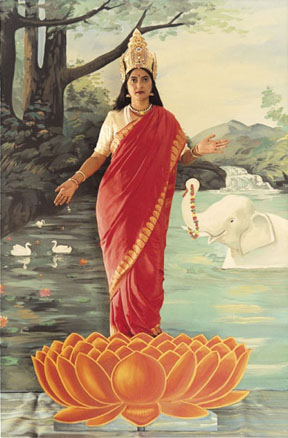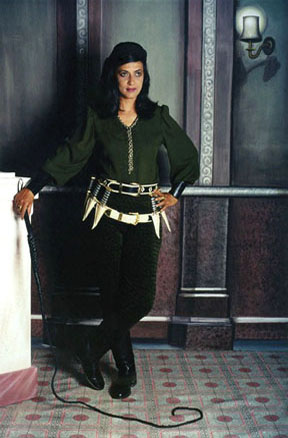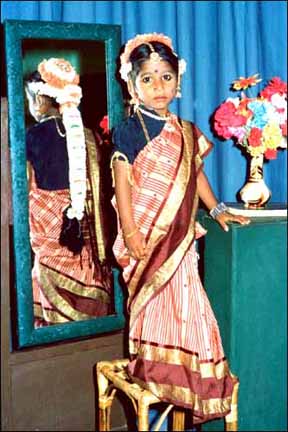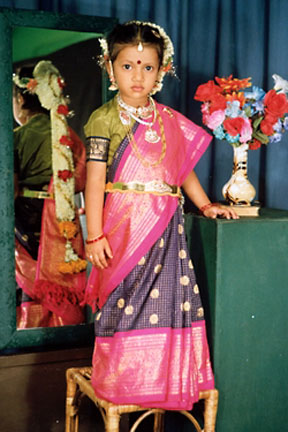 |
 |
.jpg) |
Sources employed by the artists in this show range from Colonial-era ethnographic photos and 19th century painting to early 20th century studio portraits and Bollywood films. News images and family snapshots also figure in. The latter are used to probe and to push forward into the digital era, questions of identity, ethnicity, caste and class. With only a few weak links, nearly all of what’s on view in Postdate is compelling. Though questions of identity are central, an equivalent virtue is the show’s demonstration of the ways photos can be altered, reinterpreted, reconfigured or re-arranged to reflect back or shift a photo’s original meaning.
.jpg) |
.jpg) |
his family and himself.” It’s from their archives that the artist pulls source images. What he does with them is exceedingly complex, involving mirrors, double exposures and all-too obvious cut-and-pastes of people in well-furnished rooms. These imaginary family dramas bring to mind spirit photography, the Surrealist photos of Man Ray, the collages of Jess Collins and the famous “hall of mirrors” scene from Orson Welles’ Lady from Shanghai, wherein the protagonist, played by Welles, sees his image shattered. Seen sequentially, Sundaram’s competing narratives create a game of who’s who that may leave you similarly disoriented as you try to separate what’s real from what’s not.
.jpg) |
prints. One shows a girl pressing a mirror against her cheek, watching the fog of her own breath as if it were an affirmation of her existence. Another, Urma and Nimli, Lunkaransar, shows two girls embracing. One hangs upside down by her legs from a tree, her head cradled in the other’s arms. The tenderness of it leaps out at you and feels genuine in a way that the color portraits do not. It’s easily the single strongest image in the show. Gill may not have purged India of superstatured colors and the associations that go with them, but her photos tell the truth. In 2012, TrustLaw, a news service run by Thomson Reuters, ranked India as the worst G20 country in which to be a woman.
 |
 |
.jpg) |
which is neither identified nor described by wall labels. Thus, we’re left to decipher a montage of vastly overexposed (but extraordinary beautiful) pictures of a decaying Baroque building against which a figure and a horse appear and disappear. Most visitors will probably give it a quick look and move on. That would be a mistake. Again, the catalog provides invaluable details, most important of which is the title of a key source image. It’s called Interior of the Sikanderbagh after the Slaughter of 2,000 Rebels by the 93rd Highlanders and the 4th Punjab Regiment. First Attack of Sir Colin Campbell in November 1857, Lucknow, March or April 1858. (Other sources, like the J. Paul Getty Museum, which owns a copy of the print seen above, give it different title, but it looks to be the same image employed here.) "It was," according to the exhibition catalog, "made four months after the actual battle, in 1858, by the itinerant photographer, Felice Beato, as part of an album about the Indian Mutiny of 1857.” The image above, employed by the artists, depicts the grisly remains of that event – a scattering of skeletons that appear to have been picked clean by animals. It’s a fake, we are told, because the bones wouldn’t appear as they do given the time that passed between the killings and the date the photograph was made. So what, exactly, did Beato do? Rob graves? Rearrange the remains? (An eyewitness claimed the latter.) Ultimately, the veracity of the images doesn’t matter nearly as much as how we absorb them and what we take from them. They exist as a waking dream. They don’t activate or pull from memory, but they create one in the process of asserting historical facts that were never properly documented to begin with. The artists call it “a sustained forensic reflection,” a characterization that describes a lot of what’s on view in Postdate.